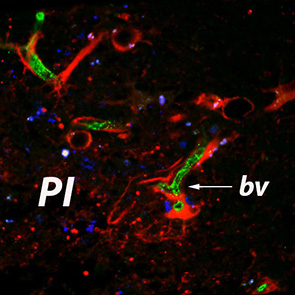A clinically relevant model of stroke using aged rats Stroke in aged rats
Main Article Content
Comorbidities like diabetes, arterial hypertension, or comorbidity factors such as
hypercholesterolemia is common in elderly persons and are associated with higher
risk of stroke. Since stroke afflicts mostly the elderly comorbid patients, it is highly desirable to test the efficacy of cell therapies in an appropriate animal stroke model. Animal models of stroke often ignore age and comorbidities frequently associated with aging, and this could be one of the explanations for unsuccessful bench-to-bedside translation of neuroprotective strategies. In order to mimic more closely the clinical condition, we have established a model of ischemic stroke in aged rats. Using this model, we showed that post-stroke angiogenesis is not impaired in the lesioned, aged brain and conclude that stroke in aged rodent models in reliable and more closely related to the human condition.

